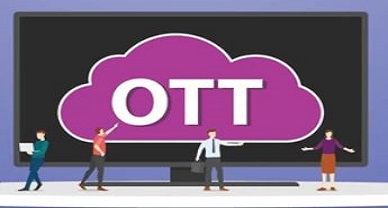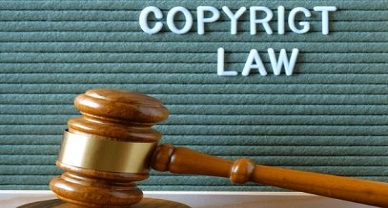Media Law: Impact of IT Rules, 2021 on OTT Platforms
In the past decade or so, media and entertainment of India, particularly streaming platforms such as Netflix, Amazon Prime, Hotstar, etc. has revolutionized. Comparatively, OTT platforms have tried and tested, new age ideas and daring themes along with addressing often considered sensitive social themes. Nevertheless, increased production of digital content has attracted more attention from the government leading to the formulation of the Information Technology (Intermediary Guidelines and Digital Media Ethics Code) Rules, 2021 (IT Rules, 2021). These rules will apply on digital media and OTT content but have given rise to censorship and freedom of creativity concerns.
The said OTT regulation came into more contention when web series Tandav was involved in criminal complaints and legal troubles over alleged violation of feelings of religion. This led to pressure on the government to regulate OTT content, which is captured by the IT Rules as the regulation measures.
On the Origin of the IT Regulations of 2021
To regulate platforms like social media middlemen and new age digital news agencies along with OTT etc which was especially put under a system of three tier regulation which covers self regulation and supervision, the 2021 IT Regulation was promulgated.
As it pertains to the main component of the IT_Rules_2021, the following;
OTT players are obligated for rating their programs as per the Universal or U/A 7+, U/A 13+, U/A 16+ or A category. Besides they should adhere to controls and age verification for adult materials.
Complaints: A Three Tier complaints system letting the viewers report any content or programme and take their complaints all the way up to a government approved body if the internal grievance redressal of the platform is unsatisfactory.
OTT platforms must form a self regulatory body chaired by retired judges or personalities that carries out content integrity conformity with a code of ethics.
These provisions have triggered a debate over whether OTT platforms are being subjected to undue control, potentially resulting in *censorship* or excessive government interference.
The Tandav Case: Catalyst for Regulation
Among the most acute incidents that led to the enforcement of the IT Rules is the case with the web series Tandav produced by Amazon Prime in January 2021. Tandav is a political drama that attracted controversy over the depiction of the Hindu gods and goddesses which some amount to instilling prejudice in the minds of the receivers. After that, many FIRs were lodged against the makers, actors and producers under the various sections of Indian Penal Code (IPC) including Section 295 A (Intent to hurt the religious feelings of any class by insulting its religion or religious beliefs) and Section 153 A (Promoting enmity between different groups).
The Legal Fallout of the Tandav Case
Legal Proceedings: Following multiple complaints, police in various states registered FIRs, and the makers of the show, including its director, Ali Abbas Zafar, were summoned by courts. The Supreme Court eventually stepped in but refused to grant interim protection from arrest to the creators. The court remarked that OTT platforms had become too “uncontrolled” and called for a mechanism to regulate content.

Court Observations: The Supreme Court’s refusal to grant anticipatory bail highlighted the judiciary’s concern over the unregulated content on OTT platforms. The court emphasized the need for a framework to ensure accountability and prevent content that could incite unrest or hurt religious or social sentiments.
The Tandav case intensified the call for regulation, as political and social groups demanded government oversight over OTT platforms to prevent the dissemination of content that could allegedly harm public sentiments or disrupt public order.
The IT Rules, 2021: Regulation vs. Censorship
The IT Rules, 2021 are supposed to offer that oversight, but they also draw worry about stifling creativity. The rules have also been criticized for blurring the line between regulation and censorship. Together with the grievance disposal mechanism, the self-regulation model empowers persons or groups to file a complaint regarding any content that may be deemed offensive, or adverse, to them and possibly make the content creators self-censor.
Impact on Creative Freedom
Tandav controversy is a clear example of how simple art pieces that deal with political and religious issues are usually the first to fall. Till date, two new sets of rules regarding IT have come into force wherein OTT platforms may begin to distance themselves from material that will lead to complaints, thus reducing emergence and future endeavors. There is a danger in freedom of the regulation of any aspect of content that can be considered sensitive–religion or politics–as a direct cause of a chilling effect whereby producers self-censor or edit their material to avoid litigation.
The FF sites or the OTT platforms which have been free from censorship are now at the risk of being more and more censored like turning into a television or a film which comes under censorship in India.
Accountability or Overreach?
On the other hand, the supporters of the new IT Rules believe that months of regulation are necessary for preserving order and safeguarding TV viewers, including children from obscene and midsection broadcasts. The aim of the framework is to establish responsibility—platforms are required to be responsible for the content that they host, and viewers equally also have a means through which they can complain.
The rules also introduce provisions for age-gated content and parental locks, which are aligned with international practices of content regulation. However, critics argue that the involvement of government-appointed bodies in the regulation process poses the risk of political overreach, where content critical of the government or addressing sensitive topics may be suppressed under the guise of maintaining public morality.
Legal Challenges and the Road Ahead
The IT Rules, 2021, have been contested before many courts by different stakeholders such as digital-news outlets as well as OTT platforms. For instance, recently, the *Kerala High Court’s* interim order in favor of LiveLaw, a digital legal news platform, pointing out that the IT Rules could potentially chill freedom of speech, and that they were at the very least a violation of Article 19(1)(a) of the Constitution, right to freedom of speech and expression.
Such endeavors have been made in other high courts, and the constitutionality of the IT Rules is to face the Supreme Court scrutiny. Algorithms of such cases will define the further development of the regulation of digital content in India.
Conclusion: A Delicate Balance
The Tandav Case is an illustrative lesson on how close the line between freedom of speech and creative expression and the violation of the community’s sensibilities in India is. It is good that IT Rules, 2021 at least try to introduce some structure of the incumbent regulation of OTT content but at the same time they sparked off fears of choking creativity and infringement of freedom of speech. Internet television providers, which have always been quite independent before the problem of business responsibility and creative freedoms arose before them.
The uncertainty of the future of digital content regulation will depend on how the courts are going to decide the IT Rules’ legitimacy. At the moment, these rules remain the rules of a regulatory experiment – an effort to respond to an ever-changing social landscape of digital media and demanding audience and to work with that response.
Author: Yashasvi Gaur, in case of any queries please contact/write back to us at support@ipandlegalfilings.com or IP & Legal Filing


